International Ophthalmology Program in Southeast Asia
OHSU Casey Eye Institute, in collaboration with OHSU Global's partnerships in Southeast Asia, is working hard to bring positive change to eye care in Myanmar. Together with our co-founder the Vejdusit Foundation and our international partners, we are collaborating to build a better future and brighter prognosis for the people of Myanmar and Thailand.
International partners
Myanmar:
Mandalay Eye, Ear, Nose, Throat, Head, and Neck Hospital
Tipitaka Eye Hospital
Yangon Eye Hospital Number One
Thailand:
Siriraj Medical School - Thailand
BDMS/Bangkok Hospital System - Thailand
Rajavithi Hospital - Thailand
Mae Fah Luang Hospital - Thailand
Quick links
Myanmar programs
Thailand programs
Additional collaborations
American Samoa Program
International Ophthalmology Program
OHSU Global
Featured International Fellows
Myanmar programs
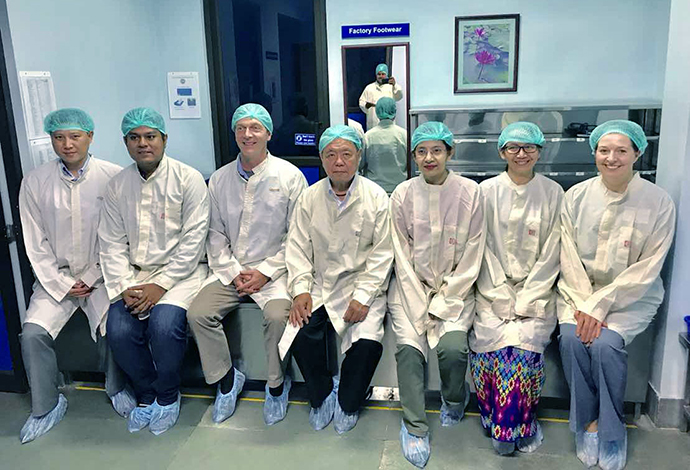
Current state of eye health in Myanmar
In Myanmar, with a population of 55 million people, 500,000 people are blind, and approximately 10% of the rural adult population suffers from blindness. 90% of the blindness in Myanmar is preventable.
With full subspecialty care and corrective surgery, the state of eye health can improve rapidly given the talented community of doctors in the country. At the onset of our program in Myanmar, there were only two cornea, one oculoplastics, one retina, and two pediatric subspecialists, and orthoptists and echographers to provide care to the entire population. Along with a small group of organizations and great investment in Myanmar, the country has succeeded in strongly increasing the number of ophthalmology subspecialists in Myanmar and general ophthalmologist and eye care staff.
Tipitaka Eye Hospital
Memorandum of Understanding with Tipitaka Eye Hospital
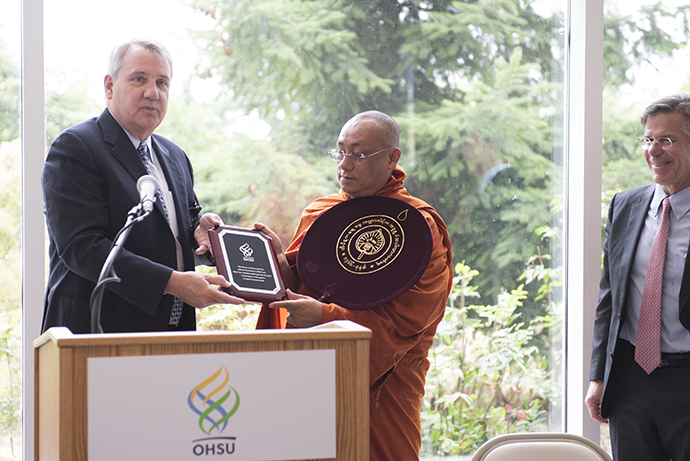
In the summer of 2017, OHSU announced the details of a global health partnership with key leaders in the country of Myanmar at the Casey Eye Institute. Joseph E. Robertson, M.D., M.B.A., then President of OHSU and David Wilson, M.D., Director of Casey Eye Institute, signed a Memorandum of Understanding, or MOU, with Bhaddanta Vamsa Parlar Linkara, Buddhist High Monk Sayadaw of Myanmar, and representative of Tipitaka Eye Hospital. A Sayadaw, or “High Monk,” is a prestigious designation for monks who have passed the highest possible exam for monks. In the 21st century, there are currently only nine monks with that designation.
The goal of the partnership is to build a sustainable model in Myanmar that will raise the standard of care for its people.
Mid-level Ophthalmic Personnel Training Program
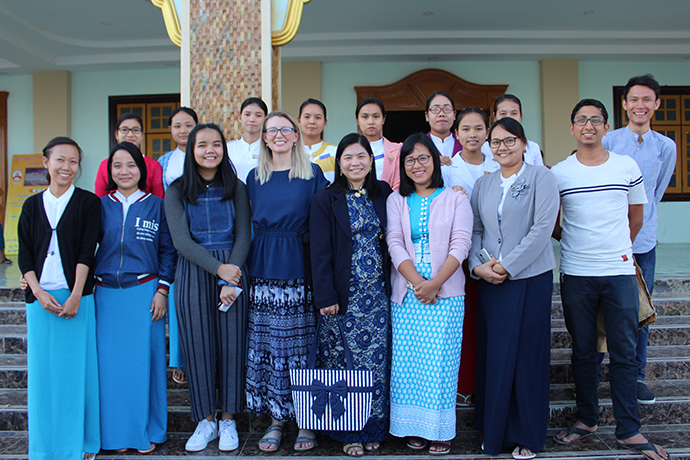
The Mid-level Ophthalmic Personnel Training Program provides training at Tipitaka Eye Hospital in Myanmar, a destination for many rural citizens who cannot afford medical care. This is a monk-led hospital working solely on charity care.
The ophthalmic technicians, nurses, orthoptists and faculty at the Casey Eye Institute actively train nurse aids to become technicians through online courses and on-site training at Casey Eye Institute. One of the focus areas is to train nurse aides to specialize in pediatric eye care. Nurse aids are supported in this training by traveling to Casey Eye Institute and through regularly scheduled trips for our specialists and trainers to travel to Myanmar.
Learn more about our nurse aide trainees Lae Lae, Wai Wai, and Nway.
Tipitika Eye Hospital Child Eye Health Program
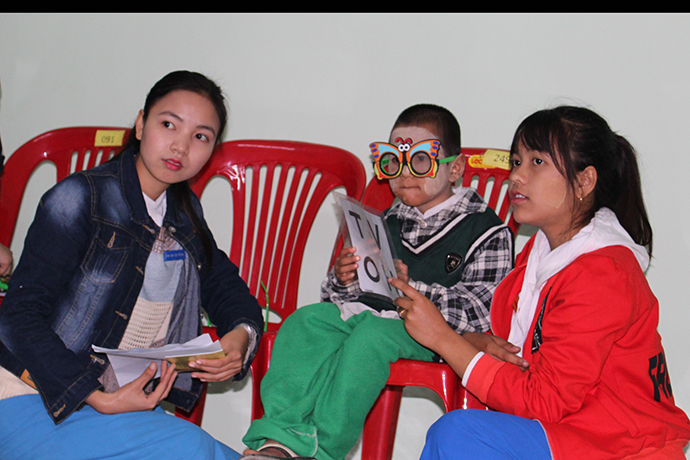
Effective detection and treatment of vision and eye health problems for children younger than 6 years old can have especially beneficial impacts on children’s physical and behavioral development. The Casey Eye Institute pediatric eye doctors have developed and established the Child Eye Health Program in Myanmar that is delivered by local eye nurse assistants using resources provided by the Myanmar Ministry of Health.
With the addition of our Mid-level Ophthalmic Personnel program training and technology improvements, the eye screening program will be an essential, sustainable element toward prevention of debilitating eye conditions in Myanmar.
Learn more about our nurse aide trainees Lae Lae, Wai Wai, and Nway.
Biomedical engineering personnel training program
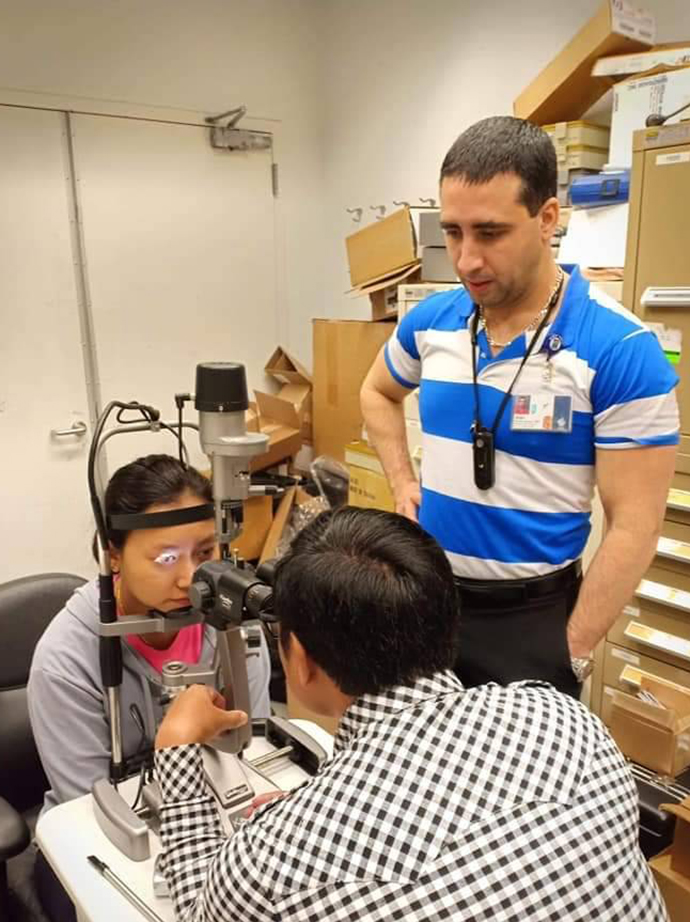
The goal is to improve the training and education of ophthalmic technicians at Tipitaka Eye Hospital to ensure that equipment is utilized to its fullest potential and is maintained in good working order. This is extremely important as Tipitaka Eye Hospital provides free eye care and relies on philanthropic gifts to maintain its operations. To help improve the utilization and maintenance of ophthalmic equipment, three technicians from Tipitaka Eye Hospital visited the Casey Eye Institute to receive fundamental training in the maintenance and repair of essential medical equipment such as microscopes, cautery, autoclaves, and lighting systems.
Learn more about our nurse aide trainees MK, Khaing Zar, and Zin.
Mandalay Eye, Ear, Nose, Throat Hospital
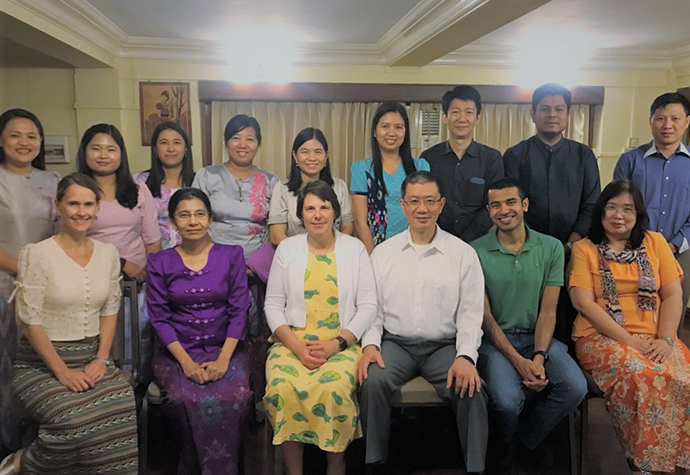
Ophthalmic Specialty Fellowship Program
Ophthalmic Specialty Fellowship Program
An important element of this program is hosting fellows from Myanmar who are able to continue their training in subspecialty areas. This extensive training will be an essential to capacity building - developing local talent to provide complex specialty care to those in need in Myanmar. To date, we have trained nine specialists including: glaucoma, oculoplastics, neuro-ophthalmology, pediatric ophthalmology, uveitis, medical retina, vitreoretinal surgical, echography, and ocularist training. Plans are already in motion to extend this opportunity to other qualified junior faculty in Myanmar, including subspecialists in cornea and pathology.
International Tele-Education Program
The didactic and case study series is tailored to Myanmar students, residents, fellows, and ophthalmologists based on their priority areas of interest. The talks and bi-directional discussions are led by OHSU Casey Eye Institute faculty. Initially specializing in glaucoma, the tele-education program will expand into other areas after the glaucoma series is complete in early 2021.
Glaucoma Trainee Lecture Series
In partnership with our Myanmar colleagues, Professor Yee Yee Aung of Yangon Eye Hospital and Professor May Thet Hnin Aye of Mandalay Eye Ear Nose Throat Head and Neck Hospital, the Casey Eye Institute hosts tele-education discussions, the most recent of which were led by Dr. Beth Edmunds and coordinated by Glaucoma fellow Dr. Maw Maw Aung.
Yangon Eye Hospital
Yangon Eye Hospital (YEH 1) is the flagship hospital within Myanmar with a breadth of training programs and tertiary eye care offerings. The ophthalmology program at the hospital is led by Professor Yee Yee Aung, a dedicated and talented leader and a strong supporter of international collaborations with the Casey Eye Institute. A range of future collaborations are expected to be based on YEH 1 leadership, including fellowship training, eye bank development, and tele education programs.
Thailand programs
Siriraj Hospital
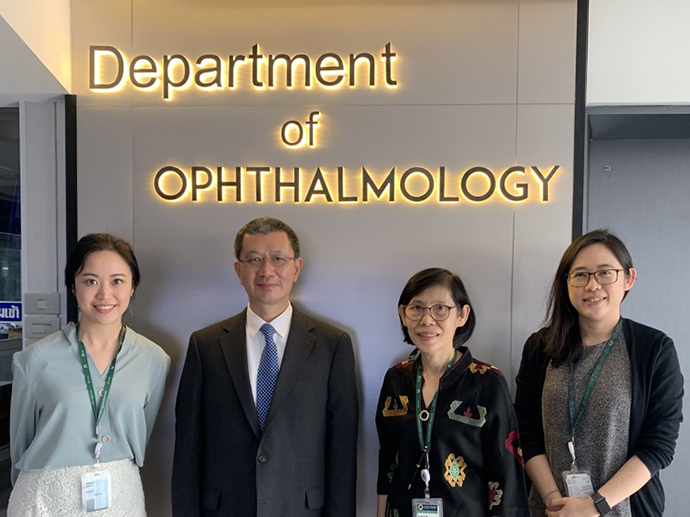
Siriraj Hospital is the largest teaching medical center in Thailand, and is part of Mahidol University, the first medical school in Thailand. The Department of Ophthalmology at Siriraj Hospital has been our partner in the following endeavors. Their invaluable partnership allows us to work together toward an improved state of eye care in Myanmar, and exciting new research.
International Fellowships
Faculty at Siriraj Hospital mentor many of our international fellows from Myanmar as part of their one-year fellowships.
OHSU Faculty Lectures at Siriraj Hospital
Faculty from the Casey Eye Institute engage colleagues in their specialty areas to residents and faculty at Siriraj Hospital, in conjunction with their shared teaching programs and on visits to their mentee fellows in Myanmar.
Tele-collaboration
Siriraj Medical School and Mahidol University has a 130+ year history of excellence as a national and regional leader in medical and ophthalmic education, patient care, and research. Siriraj Medical School and the Casey Eye Institute, led by Dr. Beth Edmunds, are embarking on a new era of tele-collaboration, advancing ophthalmology care through sharing their respective and advanced approaches to complex patient care.
Research on Inherited Retinal Diseases and Autoimmune Diseases
A specialty research area for which the Casey Eye Institute holds a long standing role as a world leader is in the area of Inherited Retinal Diseases. Along with the inauguration of an entire facility dedicated to related research and patient care, the Gene Therapy Center, the Casey Eye Institute is developing partnerships with a Bangkok-based Casey Eye Institute -trained subspecialty fellow to support their ground breaking research on inherited retinal diseases in Thailand.
Visitors from Siriraj Hospital at the Casey Eye Institute
Dr. La-ongsri Atchaneeyasakul (genetics/pediatric ophthalmology specialist), who completed an Ophthalmic Genetics fellowship at the Casey Eye Institute in 1995-1997, returned to the Casey Eye Institute with her colleagues from Siriraj Hospital, Dr. Adisak Trinavarat (vitreoretinal surgeon), Dr. Naravat Puangvarin (gene therapy scientist), and Ms. Jiraporn Santisuk (operating theater head nurse) to visit the Casey Eye Institute on October 9 through October 16, 2018 to investigate gene therapy and other research collaboration opportunities. Dr. This visit resulted in a collaborative auto-immune retinopathy and planning for a retinopathy of prematurity study.
Rajavithi Hospital
Researching retinopathy of prematurity
In a national effort to address the threat of avoidable blindness among prematurely born infants in Thailand, a national working group of pediatric eye care experts is dedicated to improving the care of retinopathy of prematurity (ROP) in their country. Doctors at the government led Thai national hospital system and its flagship, Rajavithi Hospital, are partnering with U.S. national leaders in ROP at Casey Eye Institute as well as their partners at Siraraj Hospital. Their mission is to improve the care of ROP in Thailand and globally by advancing our understanding of ROP and the important contribution that artificial intelligence may play in the effort to protect children from this perennial threat to vision.
Memorandum of understanding with Rajavithi Hospital
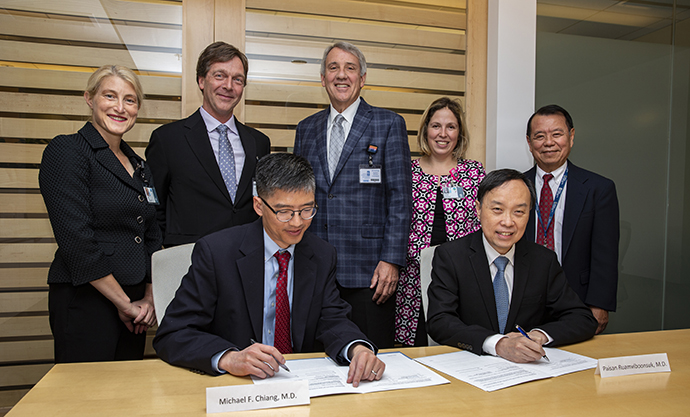
In 2019, we entered into a Memorandum of Understanding with Rajavithi Hospital in Thailand in the conduct of Artificial Intelligence based population-wide ROP research. This collaborative research is being co-lead by Dr. Paisan Ruamviboonsuk, Chair of the Department of Ophthalmology, Rajavithi Hospital, Dr. Michael Chiang, Associate Director, Casey Eye Institute, and Dr. J Peter Campbell, Assistant Professor, Casey Eye Institute.
Mae Fah Luang Hospital
Educational program development
This cutting edge advanced science hospital and educational center offers many opportunities to advance health care and education in Northern Thailand and the surrounding and nearby regions of western Laos, Shan state Myanmar, and Yunnan province, China. The ongoing construction and launch of Mae Fah Luang hospital was funded by a generous donation from the foundation of the former queen Mother of Thailand who tirelessly dedicated herself to lifting up the health and educational level of the hill tribe people and poor of Thailand. The name “Mae Fah Luang” comes from the previous King of Thailand’s mother. She was a beloved mentor of the Thai people, and the northern people were no exception, learning much from her. Mae Fah Luang is also a university, medical school, and general hospital.
Committed to welcoming all peoples in the surrounding region to their advanced educational programs in all areas of health education, Mae Fah Luang prioritizes community-based and holistic education to ensure all fields of health care are fully leveraged to the best interest of their patients and students. The Casey Eye Institute program is now exploring contributions to developing educational and research programs in partnership with MFU.
Additional collaborations
Dr. Thachapacha Kaseewat
Dr. Thachapacha “Boi” Kaseewat came from Chiang Mai University to visit the Casey Eye Institute in November 2016 for a month long observership at Casey Eye Institute’s vitreoretinal service. During this time, he evaluated both surgical and non-surgical patients in our retina practices. He worked with Drs. Bailey, Bhavsar, Campbell, Hwang, Lauer and Lin. Dr. Kaseewat also attended all of the resident lectures and conferences as well as our Ophthalmology Grand Rounds. Dr. Kaseewat was extremely liked by everyone (patients, staff, residents and faculty alike). Dr Kaseewat loves Retina and he possesses a very deep and detailed knowledge base in ophthalmology. He demonstrated exceptional communication skills with patients and respectful interpersonal behavior with staff. He also spent 2 weeks with John Haines in Eugene as part of his 6 week visit.
Dr. Kaseewat helped to translate the Standardized ICO - Ophthalmology Surgical Competency Assessment Rubric (OSCAR) into Thai. These assessment tools are available for download at no expense across the world. For this effort, he received authorship credit by the International Council of Ophthalmology.
Dr. Intira Sukpen
Dr. Intira Sukpen, Ophthalmologist from Chulalongkorn University Hospital, visited the Casey Eye Institute in June 2016 in collaboration with the University of California, San Francisco. While visiting the U.S., Dr. Intira Sukpen spent time in the Retina department with Drs. Pete Campbell, Eric Suhler, and John Boyer.
Corneal Banking is an important priority of medical leadership in Myanmar. The growth of this area of research and health system development would directly address an important cause of vision loss in the country, corneal scarring and opacification from infection, trauma and other disease. In conjunction with a worldwide team of leading corneal experts including Gerard Sutton, M.D. of Vision Eye Institute in Australia and Aravind Roy, M.D. of the L V Prasad Eye Institute in India, Winston Chamberlain, M.D. of the Casey Eye Institute and Chris Stoeger of the Oregon Lions Vision Gift Eye Bank are helping Myanmar to develop more robust corneal tissue banking techniques and systems to bolster the needed supply of this vital and very impactful resource. The physician experts specially trained to conduct this delicate surgery are also working closely with their leadership and this international collaboration to enhance their ability to steward the precious resource of donated corneal tissue. Dr. Aye Moe Htet of the Mandalay Eye, Ear, Nose, Throat Hospital will soon visit the Casey Eye Institute as well as the Oregon Lions Vision Gift Eye Bank to observe cornea techniques and systems.
Our team is also exploring future work in the northern part of Thailand. The area has a population of several million people, but does not yet possess adequate medical resources to fully support the population. The area is near the Laos, China, and Myanmar borders and is a place where many hill tribes reside, each with their own customs and cultures.
Dr. Thae Phyu Phyu Zin, Ophthalmologist from Yangon Eye Hospital, visited the Casey Eye Institute June 6-15, 2018 in collaboration with Dr. Patricia Buehler and Devers Eye Institute. While visiting Oregon, Dr. Thae Phyu Phyu Zin spent time in the Cornea department with Drs. Winston Chamberlain, John Clements, Afshan Nanji and at Devers Eye Institute Glaucoma department with Dr. Emily Jones.
Dr. Lalida Pariyakanok, Director, and her colleagues from the Thai Red Cross Eye Bank, Miss Supaporn Boonyangyuen, Deputy Director and Mrs. Nisa Jiamyoo, Head of Operations, visited the Casey Eye Institute and our collaborators at the Lions Eye Bank June 10-14, 2019 to learn about corneal eye banking and treatments and to investigate collaborative opportunities to expand access to corneal tissue in SE Asia.
Monthira Jermjutitham [her specific International Fellows page] is currently on faculty and completing a fellowship in Cornea and Refractive surgery in the Department of Ophthalmology at Chulalongkorn University, where she also earned her M.D. and completed her residency in Ophthalmology. In 2019, she visited the Casey Eye Institute for a cornea observership with Dr. Chamberlain.